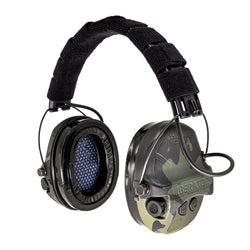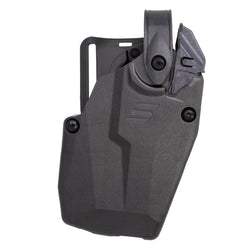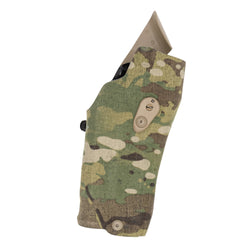U.S. Marines are about as tough as they come. Often used on the front line, they are revered for their unwavering resolve and fighting spirit. This year, the US Marine Corps celebrates its 250th birthday.
In these 250 years, they have faced down some of the most daunting challenges in military history. Their battles are legendary, and their stories are told with respect, pride, and reverence.
One way we honor a group of men and women like this is to reflect on the battles they have won, the sacrifices they made, and the freedom they preserved.
Whether you’re a military buff or just a patriotic person, battles fought by the US Marines are unbelievable. Here is a look at some of their toughest battles since their inception in 1775.
Belleau Wood: The Birth of a Legend (France)
The Battle of Belleau Wood began in June 1918, in the brutal trenches of World War I. The Marine Corps faced an unbelievable challenge. You see, German forces were advancing on Paris, and Allied lines were faltering. With troops and resources spread thin, the 4th Marine Brigade was ordered to hold the line. When Marines are told to hold the line, that’s exactly what they do. They dug in and used everything at their disposal to fight against constant attacks from German forces.
It didn’t take long for the Marines to earn a reputation for being ferocious fighters from allied forces. And the Germans noticed as well. Some German reports described the Marines as “shock troops.” They moved through the dense forest and wheat fields with a determination that the Germans were not used to.

One report found a French officer allegedly told the Marines to retreat. This caused a Marine Captain to famously say, “Retreat? Hell, we just got here!” This quote became a motto for the Marines, symbolizing their refusal to back down.
Bois de la Brigade de Marine
The battle was brutal and raged on for three weeks. Marines fought in close quarters, often with bayonets. They cleared the woods of German machine-gun nests and suffered heavy casualties. But in the end, they had secured Belleau Wood.
The French renamed the woods “Bois de la Brigade de Marine.” It means “Wood of the Marine Brigade.” The battle only added to the Marine Corps’ reputation as an elite fighting force. They had proven their mettle on the global stage.
Iwo Jima: (Japan)
Iwo Jima is a small island of about eight square miles that is mostly volcanic rock. But during WWII, it was a critical strategic objective because the Japanese had a strong garrison there. They were dug into a network of caves and tunnels, which made them extremely hard to fight. The battle on this little island began in February 1945 and was among the most savage battles of the Pacific War.
Marines faced a hellish landscape of black volcanic ash, making it hard to dig in. The Japanese defenders were well-entrenched because they had been preparing for a while. Both sides fought to the death during the battle that has often been called a slugfest. The Marines advanced inch by inch and used flamethrowers and grenades as they moved forward.

They cleared out one cave at a time, fighting for every inch of the tiny island. The most iconic moment, and one we are all familiar with, came on the fifth day. A group of Marines raised a small American flag atop Mount Suribachi. A larger flag was raised later that day, and Joe Rosenthal’s photo of the second flag raising became world famous.
A high price for victory
It symbolized the resolve of the Marines in a battle that lasted for 36 days. Nearly 7,000 Marines were killed in that short time, but they did what they were sent there to do, which was to capture the island. It allowed the US and Allied Forces an important base for air attacks on Japan.
Battle after battle, the US Marines showed they would not relent in their fight for their country.
The Chosin Reservoir (Korea)
The Korean War is often overshadowed by WWII and even the Vietnam War. But it was a brutal conflict. The winter of 1950 was a particularly harsh winter and a test of survival. The 1st Marine Division was deployed to North Korea as part of a larger U.N. force. Their mission was to advance north and push the enemy back. The Marines found themselves surrounded by an overwhelming force of Chinese soldiers. To make it worse, the temperature dropped to 20 degrees below zero.
The Marines were outnumbered and exposed to the brutal cold, but they were not defeated. They had to fight their way out, which became a fighting withdrawal to the port of Hungnam. During this time, Marines had to fight day and night, as wave after wave of Chinese soldiers came.

During this bitter cold battle, the Marines had to cross through mountainous terrain and deal with frostbite as well. More than 1,000 Marines were killed during the battle, but they also inflicted heavy losses on the enemy. As they finally broke out of the encirclement, they reached the sea.
General O.P. Smith, the division commander, summed it up perfectly when he said, “We are not retreating. We are just advancing in a different direction.”
While this battle does not get as much recognition as others, the Marines fought just as ferociously as ever. Even when they are trapped and outnumbered, they keep fighting.
Fallujah: The Urban Gauntlet (Iraq)
The Second Battle of Fallujah was also known as Operation Phantom Fury. It was a major engagement of the Iraq War that began in November 2004. As the city of Fallujah became a stronghold for insurgents, fighters were made up of a mix of Iraqi and foreign extremists. An earlier attempt to retake the city (a base of operations) in April had failed. The Marines were ordered to go back in.
This was a joint effort with American, British, and Iraqi forces participating. The Marines’ task was to clear the city house by house, street by street. Insurgents had rigged homes with improvised explosive devices, making this a slow process. They had also created a network of tunnels and strongpoints for fighting back.

As you would expect, fighting was brutal and at close quarters. The battle became a test of urban combat doctrine. The Marines relied on combined arms—including tanks, artillery, and air support — to clear each block.
House of Hell
Marines battled insurgents in one house that has famously been dubbed the “house of hell.” By the end, the Fallujah battle lasted for six weeks, and casualties were high for both sides. This battle would turn out to be one of the bloodiest of the entire war. But Marines knew how to win hard battle and they eventually secured the city.
This victory was considered a significant blow to the insurgency, and it demonstrated the Marines’ ability to fight and win in a complex urban environment. The lessons learned during this battle continue to shape modern military training.
Questions and Answers
What did the French rename Belleau Wood after the battle?
The French renamed Belleau Wood “Bois de la Brigade de Marine,” which means “Wood of the Marine Brigade.”
How many days did the Battle of Iwo Jima last?
The Battle of Iwo Jima lasted for 36 days.
What famous photo was taken during the Battle of Iwo Jima?
The famous photo is of Marines raising the American flag on Mount Suribachi.
What was the main challenge for Marines during the Chosin Reservoir campaign?
The main challenges were being outnumbered by Chinese forces and the brutally cold weather.
What was the famous quote from a Marine officer at the Battle of Belleau Wood?
A Marine Captain famously said, “Retreat? Hell, we just got here!”
What was the name of the operation for the Second Battle of Fallujah?
The Second Battle of Fallujah was called Operation Phantom Fury.









